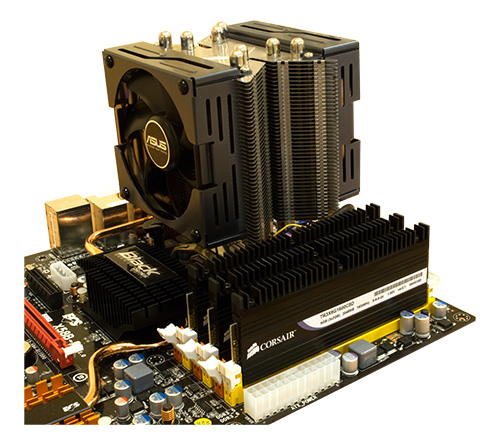
The end result is the same as Intel’s Turbo Boost from a performance standpoint. If half (or more) of the CPU cores on a Thuban die are idle, Turbo Core does the following:ġ) Decreases the clock speed of the idle cores down to as low as 800MHz.Ģ) Increases the voltage of all of the cores.ģ) Increases the clock speed of the active cores up to 500MHz above their default clock speed. AMD disabled this functionality with the Phenom II to avoid some performance problems we ran into, but it’s back with Thuban. The original Phenom processor had the ability to adjust the clock speed of each individual core. With Thuban, AMD introduces its own alternative called Turbo Core. Depending on how many cores are active and the amount of power they’re consuming a CPU with Intel’s Turbo Boost can run at up to some predefined frequency above its stock speed. This is how Intel’s Turbo Boost technology works. If you can take a single core out of the TDP equation, then with some extra logic (around 1M transistors on Nehalem) you can increase the frequency of the remaining cores until you run into TDP or other physical limitations. These power gate transistors however addressed both active and leakage power, an idle core could be almost completely shut off. In the past AMD and Intel only put gates in front of the clock signal going to a core (or blocks of a core), this would make sure the core remained inactive but it could still leak power - a problem that got worse with smaller transistor geometries. Stick one of these in front of a supply voltage line to a core, turn it off and the entire core shuts off. With Nehalem, Intel introduced power gate transistors. Go for a dual core chip and you’ll run the simple things quickly, but suffer in encoding and gaming performance.

If you opt for a six core processor you get great encoding performance, but worse gaming and web browsing performance. Browsing the web may only task one or two cores, gaming might use two or four and encoding a video can use all six. Instead you’ve got a mix of applications and workloads that’ll use anywhere from one to six cores. This is fine if all of your applications are multithreaded and can use all available cores, but life is rarely so perfect.

Six cores? Now you’re probably down to 3.2GHz. Want a quad-core version? Drop the clock speed again. If a single hypothetical 4GHz processor core hits 125W, then fitting two of them into the same TDP you have to run the cores at a lower clock speed. In homogenous multicore CPUs you’ve got a number of identical processor cores that together have to share the maximum TDP of the processor.

These TDP limits become a problem as you scale up clock speed or core count. High end desktop CPUs now spend their days bumping up against 125 - 140W limits. It wasn’t until we started hitting physical limits of power consumption and heat dissipation that Intel (and AMD) imposed some limits.

Prior to the Pentium 4, desktop PCs saw generally rising TDPs for both CPUs and GPUs with little regard to maximum power consumption.
HOW TO ENABLE TURBO BOOST AMD PC
In the Pentium 4 days Intel quickly discovered that there was a ceiling in terms of how much heat you could realistically dissipate in a standard desktop PC without resorting to more exotic cooling methods.


 0 kommentar(er)
0 kommentar(er)
